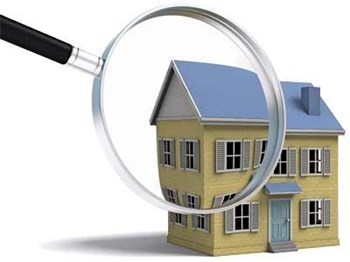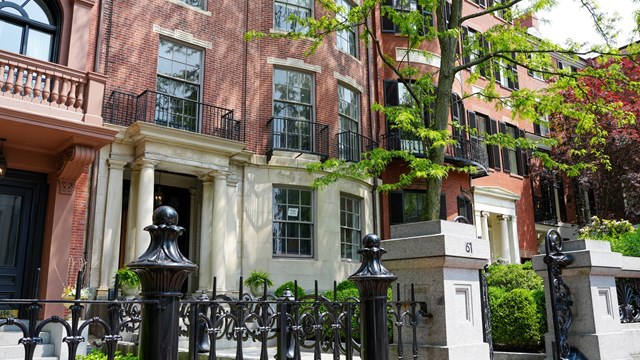
It’s a simple equation: Warmer temperatures and melting snow means that spring is rearing its head around winter’s chilly corner. And aside from the change of wardrobe, there’s one other thing that condominium residents have to look forward to. No, not pool parties (just yet, anyway) – we’re talking about spring-cleaning.
“Many of these buildings are getting old,” said engineer Ralph Noblin, of Noblin & Associates, LC, a consulting engineering firm in Bridgewater, Massa-chusetts. “Particularly stuff built in the‘80s – they’re really hitting a point now where they need a lot of work.”
Unfortunately, raking a few flowerbeds of old leaves and power washing the siding may be the least of your worries. Long winters generally bring about a plethora of water-induceddamage. This damage is evaluated by a board or property manager during a seasonal walk-through. If you love where you live and you want to keep it in good shape, then these walk-throughs are vital to your residential property’s integrity.
“The analogy would be the little boy or girl who’s spinning those plateswith the long sticks; in the beginning we spend a lot of time getting that plate set,” said David J. Levy, PCAM, of Sterling Services in Holliston, Massachusetts. “After that you have to run up and down the line making sure every plate gets something so nothing crashes to the floor. That’s what we tell the clients – we make sure the plate is spinning.”
The walk-through is a time for management teams to assess exactly what’s been done during the harsh winter, as well as formulate a game plan to deal with maintenance issues not only of immediate importance, but also throughout the next year.
Who Should Do the Walk-Through?
There is no magic group of owners, board members or trustees necessary to examine the property. However, it isimportant that the property manager and at least two board members participate in the primary seasonal walk-through. The more sets of eyes, the better.
“Trustees should really all have a certain level, a minimum level of knowledge on their particular property,” said Noblin.
Others take a more hands-on approach. Levy says that his company does walk-throughs on a weekly basis, and all of the residents are invited to take part. Whether or not they actually participate, having the option makes the upkeep of the property a more open forum for every party.
Another important factor is that the information during the walk-through is communicated and reported back to the entire board for review. Using modern technology, such as digital photography, you can actively convey what needs to be fixed through images.
What to look for? In short, everything. A seasonal walk-through is no time for property managers or trusteesto overlook problems. Damage that is not properly addressed may worsen, and eventually become a greater expense – one that could have been avoided with adequate attention.
“Unfortunately there’s a lot of out of sight, out of mind approaches and attitudes by homeowners and trustees,” said Noblin. “They kind of take a ‘woe-is-me, let me just stick my head in the sand here,’ approach. It makes no sense. They really need to know their properties.”
Looking Up
So where to start? Well, begin by looking up. Assess the property’s tree structures for potentially hazardous situations. Winter weather can snap tree limbs and pruning them is not only best for your safety, but also the health of the tree itself and the aesthetic of the overall properly.
“This helps promote better air circulationaround buildings, preventing moisture issues,” said Matthew T. Gramer, president of NatureWorks Landscape Services, Inc. in Walpole, Massachusetts. “It also deters pests like squirrels from being easily able to jump onto roofs.”
Looking down, review any damage that may have been caused by winter maintenance vehicles (i.e., plows, sanding trucks, etc.), specifically on lawn areas. When looking at the lawn, take some time to focus on the flower-beds and quality of mulch left after the harsh season. Generally mulch is laid down each year, and ends up accumulating in certain areas more than others. Excess buildup of mulch can stress other shrubs and trees in the area, as well as cause rotting in the woodwork near the foundation of your home.
And then, of course, there are the shrubs themselves.
“Some varieties respond well to renovational pruning in the early spring, which means that the plant can be pruned back between 30 and 60% of its size and it will flush out new, more manageable growth in the coming months,” said Gramer. “Some good candidates for spring pruning like this would be Forsythia, Inkberry Holly, and Spirea, to name a few.”
So how do we treat the damage? Power raking may be the perfect solution for the yard. This scratches the surface clean, and then provides a better surface for new fertilization. “We find it helps address lawns that have matted down, removes small debris in the lawn, and makes it look rejuvenated,” said Gramer.
Take a look at the quality of your plants. If you’re seeing some strugglers, or plants that have lost a lot of their vibrancy and green color, then they are most likely lacking nutrients.
“Some common examples are Rhododendron with yellowing leaves or Pachysandra that doesn’t have that rich green foliage color,” said Gramer. “A surface feeding using a granular fertilizer will do the trick.”
Drainage
Gutters and pipes are another area worth checking out. Make sure to review the property’s drains to ensure they are not clogged with winter debris, specifically before spring rains move in.
“This time of year every condominium should be looking at their drainage structures,” suggested Noblin. “Check gutters, downspouts, and underground piping catch basins to make sure everything is flowing freely.”
Starting with the sprinklers, it is important to examine your irrigation systems, which will require some standard maintenance. Turn the water on by zones on the property, and examine each area individually. The sprinkler heads generally need an adjustment – and if they have been blocked by plants and other winter debris, this would be the time to cleanout the area.
“As the landscape matures and evolves, so should your irrigation system,” saidGramer.
Proactive Preparation
Fortunately, there are ways to mitigateroutine winter damage. The best way to prepare for the effects of winter weather is to prepare far in advance.
“You have to act both proactively andreactively. It’s all about preparation,” said Levy.
Work orders from residents are the reactive necessity of the board. Mean-while, planning ahead for projects will be a lifesaver. For example, if you’re well aware that the siding will need painting every three years after a hard winter, prepare for that project and hand out bids for work months in advance.
“You’re meeting with the carpenter in April and May – to make sure the prep is being done properly,” said Levy. “And then in June and July, meeting with the painter to make sure you have those bases covered.”
Advance planning also enables budgeting, and talking to the residents about what these costs will mean, and laying everything else out on the table.
And what about priorities? While cracking on pavement may be an eyesore, it takes a back seat to anything that may compromise the foundations of the residential area. Big projects, like siding or roofing repair, are a first priority that should be tackled as soon as a problem is detected. Getting to the heart of an issue before other problemsstem off is vital.
Ideally, the board looks to the landscape contractor as a valuable resource in helping to plan and prioritize the work list that comes out of a spring walk-through. Begin by creating a checklist of what needs to get done and how you can effectively take care of each item, and who is involved in the repair.
The board members will then have to evaluate how much money they have to work with and see what is realistic, and can also elect to get otherquotes on projects to ensure they are competitive and that they are diligent in representing the other residents of the association.
Where’s the Funding?
Generally, the maintenance fee is thesource of seasonal funding. However, if there are unexpected issues, boards may be asking their residents for an additional sum, usually in the form of a special assessment.
Asking for more money is never easy. And unfortunately, these costs may be a bit of a shocker to residents.
“These numbers are just catching people kind of off guard,” said Noblin. “They think their mindset going into condominium living was, ‘You know what, this is going to be a cheaper way to live.’”
Emily Abbate is a freelance writer and a frequent contributor to New England Condominium magazine.






Comments
Leave a Comment